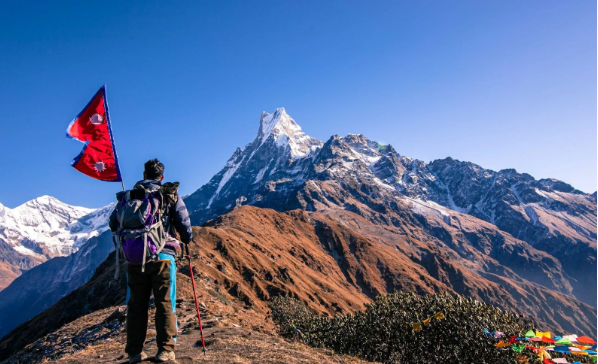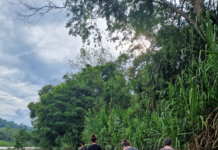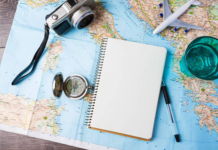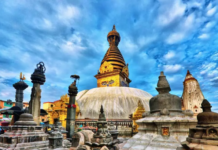Trekking in Nepal is one of the most remarkable travel experiences in the world. Blessed with eight of the fourteen highest peaks on Earth, including Mount Everest (8,848m), Nepal offers endless opportunities for adventure seekers, nature lovers, and cultural explorers alike. From short, scenic walks through traditional villages to challenging expeditions over high mountain passes, trekking in Nepal is an unforgettable journey into the heart of the Himalayas.
Why Nepal Is the World’s Top Trekking Destination
Nepal is a paradise for trekkers for many reasons. The country’s geography ranges from lush subtropical forests to towering snow-capped peaks, creating an unparalleled diversity of landscapes. Beyond the stunning scenery, Nepal offers something more — a deep cultural connection with ancient traditions, warm hospitality, and spiritual experiences that make every trek meaningful.
Trekkers are drawn not only by the beauty of the mountains but also by the charm of the Sherpa, Gurung, and Magar communities. These resilient mountain people welcome travelers into their homes and monasteries, offering insight into their unique way of life that has remained unchanged for centuries.
Popular Trekking Regions in Nepal
Nepal’s trekking routes are spread across several iconic regions, each offering distinct experiences, cultures, and landscapes.
1. Everest Region (Khumbu Valley)
Home to the world’s highest peak, the Everest region is the most famous trekking area in Nepal. The classic Everest Base Camp Trek takes you through Sherpa villages, Buddhist monasteries, and breathtaking viewpoints like Kala Patthar (5,545m). You’ll witness awe-inspiring panoramas of Everest, Lhotse, Nuptse, and Ama Dablam.
For those seeking a shorter or more luxurious option, the Everest Base Camp Helicopter Tour offers an unforgettable aerial view of the Himalayas. Other treks in this region include the Gokyo Lakes Trek and the Three Passes Trek, known for their challenging trails and spectacular scenery.
2. Annapurna Region
The Annapurna region offers some of the most diverse trekking routes in Nepal. The Annapurna Circuit Trek circles the entire range, showcasing everything from subtropical valleys to alpine landscapes. The Annapurna Base Camp (ABC) Trek is another popular route that takes trekkers deep into the Annapurna Sanctuary, surrounded by towering peaks.
Shorter alternatives like the Ghorepani Poon Hill Trek and Mardi Himal Trek are perfect for those with limited time but still seeking stunning mountain views and rich cultural encounters.
3. Langtang Region
Just a few hours from Kathmandu, the Langtang Valley Trek combines natural beauty with Tibetan-influenced culture. Known as the “Valley of Glaciers,” Langtang offers dramatic mountain scenery, yak pastures, and sacred lakes such as Gosaikunda. Trekkers can also extend the journey to explore the Langtang with Frozen Lake Trek, a hidden gem offering solitude and breathtaking views.
4. Manaslu Region
For adventurers seeking less crowded trails, the Manaslu Circuit Trek is a perfect choice. Circling Mount Manaslu (8,163m), the world’s eighth-highest peak, this trek offers pristine landscapes, suspension bridges, and authentic village life. Crossing the Larkya La Pass (5,160m) is one of its most thrilling highlights.
5. Kanchenjunga Region
The Kanchenjunga Base Camp Trek leads to the base of the world’s third-highest mountain, on Nepal’s remote eastern frontier. It’s one of the most beautiful yet challenging treks, showcasing untouched wilderness, rare wildlife, and vibrant Rai and Limbu cultures.
6. Upper Mustang and Dolpo
For those seeking off-the-beaten-path adventures, Upper Mustang and Upper Dolpo offer mystical landscapes reminiscent of Tibet. These restricted regions feature ancient monasteries, desert-like terrain, and centuries-old Buddhist traditions. Trekking here feels like traveling back in time.
Trekking Permits and Regulations
Most treks in Nepal require specific permits. The main ones include:
- TIMS Card (Trekkers’ Information Management System) – Ensures safety and records trekking routes.
- National Park or Conservation Area Permits – Such as Annapurna Conservation Area (ACAP) or Sagarmatha National Park Permit.
- Restricted Area Permits – Needed for areas like Upper Mustang, Manaslu, and Dolpo, which require trekkers to be accompanied by a registered guide.
It’s important to arrange permits through a registered trekking agency or in Kathmandu and Pokhara before your trek begins.
Best Time for Trekking in Nepal
The ideal time for Trekking in Nepal is during autumn (September to November) and spring (March to May).
- Autumn: Offers clear skies, stable weather, and panoramic mountain views.
- Spring: Known for blooming rhododendron forests and pleasant temperatures.
- Winter (December–February): Good for lower-altitude treks but can be cold at higher elevations.
- Monsoon (June–August): Brings rain and leeches but great for lush scenery and fewer crowds in some regions like Mustang.
Accommodation and Food on the Trail
Most trekking routes in Nepal offer teahouse accommodation — small, family-run lodges providing simple yet cozy rooms. You’ll enjoy traditional Nepali meals like Dal Bhat (rice, lentils, and vegetables), as well as international options such as pasta, pancakes, and soups.
Luxury lodges are available on popular routes like Everest and Annapurna, offering added comfort, hot showers, and Wi-Fi access.
Physical Preparation and Difficulty
Trekking in Nepal can range from easy walks to challenging expeditions. While short treks like Poon Hill or Langtang Valley are suitable for beginners, others like Manaslu or Kanchenjunga require good fitness and prior trekking experience.
It’s recommended to train with regular walking, jogging, or hiking several weeks before your trip. Altitude acclimatization is crucial for higher treks — ascend gradually and drink plenty of water to prevent altitude sickness.
Cultural Experience Along the Trails
Beyond the mountains, Nepal’s cultural richness is what makes trekking here truly special. Trekkers encounter Buddhist monasteries, prayer flags, chortens, and mani walls throughout the trails. In villages, you can observe traditional dances, local festivals, and the deep spirituality that defines rural Nepal.
The hospitality of the Nepali people is legendary. A simple greeting of “Namaste” opens doors to heartfelt connections and lifelong memories.
Responsible and Sustainable Trekking
As trekking grows in popularity, sustainability becomes increasingly important. Here are some tips for responsible trekking:
- Use a reusable water bottle and purification tablets instead of buying plastic bottles.
- Respect local customs and ask before taking photos of people.
- Stay on designated trails to avoid erosion.
- Support local businesses by staying in community-owned lodges.
- Avoid littering and carry back non-biodegradable waste.
Your mindful actions help preserve Nepal’s natural beauty for future generations.
Why Trekking in Nepal Is a Life-Changing Experience
Trekking in Nepal is more than a physical journey — it’s a spiritual awakening. The grandeur of the Himalayas, the simplicity of mountain life, and the genuine warmth of the people combine to create an experience that touches your soul.
Whether you’re watching the sunrise over Poon Hill, crossing the suspension bridges of the Khumbu, or sharing tea with a local family in Ghandruk, every moment feels timeless and profound.
Nepal teaches you the essence of patience, endurance, and gratitude — values that stay with you long after you’ve returned home.
Conclusion
From the majestic Everest region to the mystical valleys of Manaslu and Mustang, Trekking in Nepal offers a journey through some of the world’s most spectacular landscapes and cultures. With trails suited to every level, warm-hearted locals, and awe-inspiring Himalayan vistas, Nepal remains the ultimate trekking destination for adventurers across the globe.
Whether you seek a short scenic hike or a challenging expedition to a remote base camp, one thing is certain — trekking in Nepal is not just about reaching the mountains, but about discovering yourself along the way.




